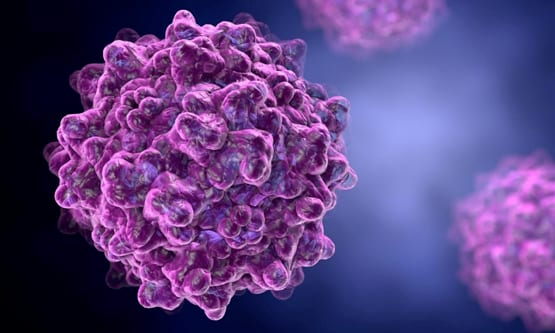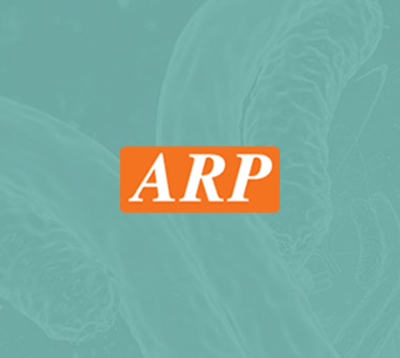Adeno-associated virus (AAV)
Adeno-associated virus (AAV)
Adeno-associated virus (AAV) product focus
Adeno-associated virus (AAV) is a small non-enveloped virus of the family Parvoviridae that is capable of infecting humans and some primates. It is distinct in its apparent lack of immunogenicity as it typically only elicits a mild immune response. 11 serotypes have so far been identified with AAV2 being the most well characterized [1,2].
In recent years, recombinant AAV vectors have proved popular as delivery systems for gene therapy. They have the advantage of being able to infect both dividing and non-dividing cells and do not integrate into host genomes. However, there are some disadvantages as they are small in size with a packaging capacity of around 4.5 kilobases. This means that for most gene therapies the entire 4.8 kilobase genome must be replaced and in some cases the genome will be too small for the therapeutic gene. Different AAV serotypes have different tropism to the tissues they infect. Researchers are further refining AAV vector tropism by creating hybrids using different AAV genome and capsids. For example, the genome of AAV2 can be combined with the capsid of AAV5 to create a pseudotyped virus hybrid that more efficiently targets neurons.
As of December 2018, AAV vectors have been used in 238 clinical trials which represents 8.1% of Gene therapy clinical trials [3]. These include 21 phase III trials for indications such as advanced metastatic prostate cancer, Leber Congenital Amaurosis, Choroideremia and hemophilia A.
AAV derived vectors are also proving to be a useful delivery device for CRISPR (clustered regularly interspaced short palindromic repeats) DNA editing machinery. In 2014, researchers first reported successfully developing plasmids and vectors derived from adeno-associated virus (AAV) that can deliver Cas9 and chimeric g(uide)RNA - together or in combination [4]. More recently their application has also been investigated in the delivery of CAR DNA to supports CAR-T cell development - potentially providing an alternative to lentiviral and retroviral vectors [5].
ARP provide a variety of AAV antibodies to support your research needs, the majority of which have been used and cited in publications. These include anti-AAV2 antibody and anti-AAV9 antibody.
References
- https://www.addgene.org/guides/aav/
- BioDrugs. 2017 Aug;31(4):317-334. doi: 10.1007/s40259-017-0234-5. Adeno-Associated Virus (AAV) as a Vector for Gene Therapy. Naso MF et al.
- http://www.abedia.com/wiley/vectors.php
- Biotechnol J. 2014 Nov;9(11):1402-12. doi: 10.1002/biot.201400046. Epub 2014 Oct 6. CRISPR/Cas9-mediated genome engineering: an adeno-associated viral (AAV) vector toolbox. Senís E et al Author information
- Biotechnol J. 2019 Oct 23:e1900286. doi: 10.1002/biot.201900286. [Epub ahead of print] Adeno-Associated Viral Vectors for Homology-Directed Generation of CAR-T cells. Moço PD et al.




